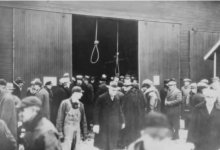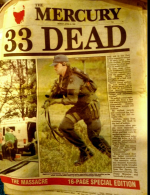Install the app
How to install the app on iOS
Follow along with the video below to see how to install our site as a web app on your home screen.
Note: This feature currently requires accessing the site using the built-in Safari browser.
You are using an out of date browser. It may not display this or other websites correctly.
You should upgrade or use an alternative browser.
You should upgrade or use an alternative browser.
Blast from the past
- Thread starter Administrator
- Start date
Well thats pretty average.Look at the craftsmanship of that bench. Stunning.
Man, I've seen those COLOURS !
That Dr would freak me out though
When u wave ur hand in front of ur face & all u see is Streamers of COLOURSPerception of electrical charge?
U NEVER forget that
I have some stories that are probably best reserved for a private thread.
Here's another funny video of an experiment with a portrait artist:
View: https://youtu.be/Ipq6nBSuCqQ?feature=shared
Yes, some stories are best not posted on the Internet
Prob way out in the sticks like Palm Beach or somethin.
It's Canberra. The city was new and undeveloped then.Prob way out in the sticks like Palm Beach or somethin.
Oh so its a happy story! They dodged a bulletIt's Canberra. The city was new and undeveloped then.
I live hereOh so its a happy story! They dodged a bullet
It's like my third leg. Occasionally grows on me and hard to relocate.
This haunting photograph from 1936 captures a penny auction at a foreclosed farm in Michigan — one of the most defiant and ingenious acts of resistance to emerge during the Great Depression.
When banks repossessed farms after families fell behind on their mortgages, local communities often took justice into their own hands. Farmers would arrive by the dozens, sometimes hundreds, and agree beforehand to bid only pennies on each item — from livestock to land — ensuring the auction brought in virtually nothing.
The “winning bidder,” usually a trusted neighbor, would then return the property to the original family, allowing them to remain on their land. It was quiet rebellion cloaked in community solidarity — a desperate yet brilliant strategy for survival.
In the background of the photo, nooses hang from barn rafters — not as decoration, but as warning. They were meant for “squirrelly bidders,” outsiders or opportunists tempted to defy the pact and bid high. These were not empty threats. In those lean years, loyalty was sacred, and betrayal could mean ruin for everyone.
Penny auctions became a powerful symbol of rural unity and defiance. They weren’t just about saving one farm — they were about preserving dignity, family, and a way of life slipping away under economic despair.
By 1933, more than 200,000 farms had been foreclosed across the Midwest, sparking organized movements like the Farmer’s Holiday Association, which fought to halt foreclosures entirely.
In that frozen Michigan winter, a few cents and a shared promise were sometimes all that stood between a family and the loss of everything they’d ever built.

When banks repossessed farms after families fell behind on their mortgages, local communities often took justice into their own hands. Farmers would arrive by the dozens, sometimes hundreds, and agree beforehand to bid only pennies on each item — from livestock to land — ensuring the auction brought in virtually nothing.
The “winning bidder,” usually a trusted neighbor, would then return the property to the original family, allowing them to remain on their land. It was quiet rebellion cloaked in community solidarity — a desperate yet brilliant strategy for survival.
In the background of the photo, nooses hang from barn rafters — not as decoration, but as warning. They were meant for “squirrelly bidders,” outsiders or opportunists tempted to defy the pact and bid high. These were not empty threats. In those lean years, loyalty was sacred, and betrayal could mean ruin for everyone.
Penny auctions became a powerful symbol of rural unity and defiance. They weren’t just about saving one farm — they were about preserving dignity, family, and a way of life slipping away under economic despair.
By 1933, more than 200,000 farms had been foreclosed across the Midwest, sparking organized movements like the Farmer’s Holiday Association, which fought to halt foreclosures entirely.
In that frozen Michigan winter, a few cents and a shared promise were sometimes all that stood between a family and the loss of everything they’d ever built.




